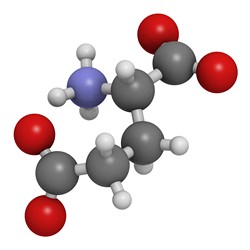When negative is positive in biology
Negatively charged species have an enormous biological and environmental relevance. For example, chloride ion is the most abundant anion in humans and abnormal levels or deficient transport are related to severeal diseases such as cystic fibrosis. Other relevant anionic species include anionic amino acids like aspartic and glutamic acid that also play an important role as neurotransmitters. Researchers with the ANION_CAGES (Dynamic constitutional chemistry for the preparation of receptors for anions of biological interest) project worked to develop efficient receptors for aqueous anions. Using the principles of dynamic combinatorial chemistry (DCC), they overcame challenges associated with good affinity. Generating new molecules by reversible reactions using simple building blocks (BBs) under thermodynamic control, DCC gives rise to a dynamic combinatorial library (DCL). ANION_CAGES used peptidic or pseudopeptidic BBs and generated molecular libraries through the formation of dynamic covalent bonds – disulphide formation and disulphide metathesis. ANION_CAGES prepared a large family of building blocks with different functions and a varying number of thiol groups. A range of reaction conditions including pH and solvent produced reproducible DCLs. Researchers constructed a solid information platform for future work on anion receptors in an aqueous environment. Combining BBs with different valences should result in increasing complexity of the mixture in terms of structure and topology. Investigation into exclusively producing one product via self-recognition events came up with valuable results. Scientists succeeded in identifying these interactions, the result of recognition of an amino acid zwitterion in water. Not only that, they characterised the effect of structural and environmental variations on the outcome of the libraries. Results of ANION_CAGES have been published as research papers in publications such in Royal Soc Chemistry publishing and others. A comprehensive publication ‘Adaptive Correction from Virtually Complex Dynamic Libraries: The Role of Noncovalent Interactions in Structural Selection and Folding’ can be found in Chemistry a European Journal. in future, study findings can be used for the preparation of selective sensors that work in water for detecting amino acids and studying their role in vivo. Preliminary results have validated the feasibility of this approach. ANION_CAGES research results can be used in the synthesis of biologically relevant molecules in many areas of biology, medicine and the environment.







